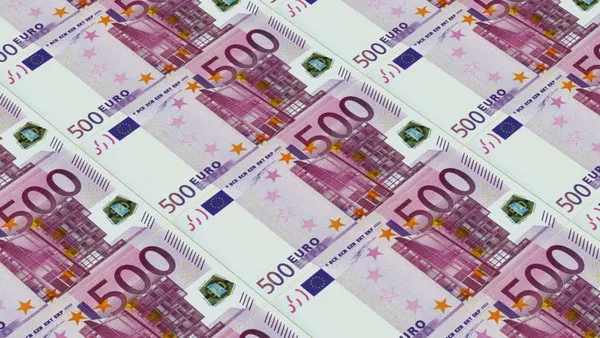In a globalized economy, understanding currency exchange rates and their implications is crucial for both individuals and businesses. As of today, many might wonder, “How much is 76 euros in pounds?” The answer to this question isn’t static; it fluctuates based on a variety of factors. This article delves into the intricacies of currency exchange rates, their calculation, and the broader economic and legal implications.
Current Exchange Rate
The exchange rate between the euro (EUR) and the British pound (GBP) is the rate at which one currency can be exchanged for the other. As of the latest update, the exchange rate stands at approximately 0.85 GBP for every 1 EUR. This means that 76 euros are roughly equivalent to 64.6 pounds. However, it’s essential to note that exchange rates are constantly changing due to market dynamics.
Conversion Calculation
To convert euros to pounds, the formula is straightforward:
Amount in GBP=Amount in EUR×Exchange Rate
Using the current exchange rate (0.85):
76EUR×0.85GBP/EUR=64.6GBP
For accurate conversions, it is advisable to use real-time exchange rates provided by financial news websites, currency converters, or directly from banks and forex services.
Factors Influencing Exchange Rates
Exchange rates are influenced by a myriad of factors, including:
Interest Rates: Central banks, such as the European Central Bank (ECB) and the Bank of England (BoE), set interest rates which directly impact currency values. Higher interest rates attract foreign capital, causing the currency to appreciate.
See Also:90 Euros in US Dollars
Economic Indicators: GDP growth rates, unemployment rates, and inflation figures are critical indicators. Strong economic performance typically strengthens a currency.
Political Stability: Countries with stable governments and predictable policies tend to have stronger currencies. Political turmoil can lead to currency depreciation.
Market Speculation: Traders in the forex market speculate on future movements of currencies. Their actions can cause fluctuations in exchange rates.
Trade Balances: A country with a significant trade surplus will typically see its currency appreciate, while a trade deficit can lead to depreciation.
Government Debt: High levels of national debt can deter investment and cause a currency to weaken.
Forecast and Trends
Forecasting exchange rates is a complex task that involves analyzing historical data, current economic conditions, and future expectations. Over the past few years, the euro-pound exchange rate has seen considerable volatility, influenced by Brexit negotiations, economic policies, and global events such as the COVID-19 pandemic.
Experts use various models to predict future trends, including:
Purchasing Power Parity (PPP): This theory suggests that in the long term, exchange rates should move towards the rate that would equalize the prices of an identical basket of goods and services in any two countries.
Interest Rate Parity (IRP): This theory states that the difference in interest rates between two countries will equal the expected change in exchange rates between the countries’ currencies.
Economic Modelling: Economists use advanced statistical techniques and economic models to predict future exchange rates based on a wide range of economic indicators.
See Also:200 Euros in Pounds
While forecasts can provide valuable insights, they are inherently uncertain due to the multitude of unpredictable factors influencing the global economy.
Financial Advice
When dealing with currency exchange, especially for substantial amounts, it’s wise to consider the following financial advice:
Timing: Monitor the market and choose the right time to exchange currency. Small fluctuations can make a significant difference in large transactions.
Hedging: Businesses involved in international trade can use hedging strategies to protect against unfavorable exchange rate movements.
Diversification: Investors should diversify their portfolios to mitigate risks associated with currency fluctuations.
Professional Advice: Consulting with financial advisors or forex specialists can provide tailored strategies and insights.
Legal and Tax Implications
Currency exchange can have legal and tax implications, particularly for businesses and investors:
Reporting Requirements: Individuals and businesses may be required to report foreign exchange gains or losses to tax authorities.
Taxation: In some jurisdictions, foreign exchange gains are taxable. It’s essential to understand the local tax laws and consult with tax professionals.
Regulatory Compliance: Ensure compliance with all relevant regulations, including anti-money laundering (AML) laws and foreign exchange controls.
Economic Indicators
Several economic indicators can provide insights into future currency movements:
Gross Domestic Product (GDP): A strong GDP growth rate is a sign of a robust economy, often leading to a stronger currency.
Inflation Rates: Lower inflation typically supports a stronger currency, as it preserves purchasing power.
Employment Data: High employment rates signal a healthy economy, contributing to currency strength.
Consumer Confidence: Higher consumer confidence can lead to increased spending and investment, boosting the currency.
Trade Balances: A positive trade balance indicates more exports than imports, which can strengthen a currency.
Global Market Impact
Exchange rates don’t operate in isolation; they are influenced by and can influence global markets:
International Trade: Exchange rates affect the competitiveness of exports and imports. A weaker currency makes exports cheaper and imports more expensive, while a stronger currency has the opposite effect.
Investment Flows: Investors seek the highest returns, which can lead to capital flows into countries with favorable exchange rates, affecting global investment patterns.
Global Supply Chains: Multinational corporations must manage currency risks to protect their profit margins, as exchange rate fluctuations can impact costs and revenues.
Commodity Prices: Many commodities are priced in U.S. dollars. A strong dollar can make commodities more expensive in other currencies, affecting global demand and prices.
Conclusion
Understanding the value of 76 euros in pounds involves more than a simple calculation. It requires an appreciation of the complex factors that influence exchange rates, from economic indicators and political stability to market speculation and global trade dynamics. Staying informed about these factors, seeking professional financial advice, and being aware of the legal and tax implications are essential steps in making informed financial decisions.
In a world where currencies constantly fluctuate, knowledge and strategic planning are key. Whether you’re a traveler, an investor, or a business owner, understanding exchange rates can help you navigate the global economy more effectively and make decisions that align with your financial goals.
Related Topics:



























